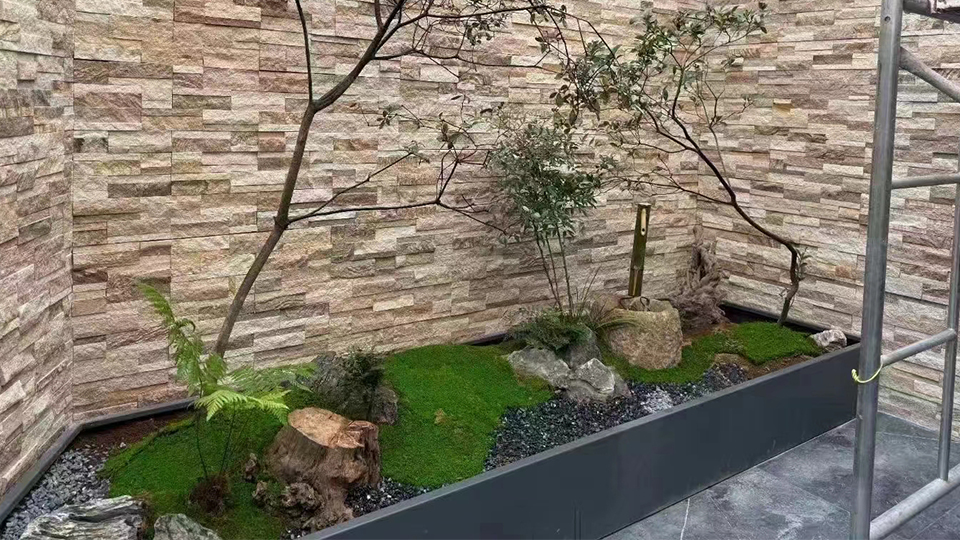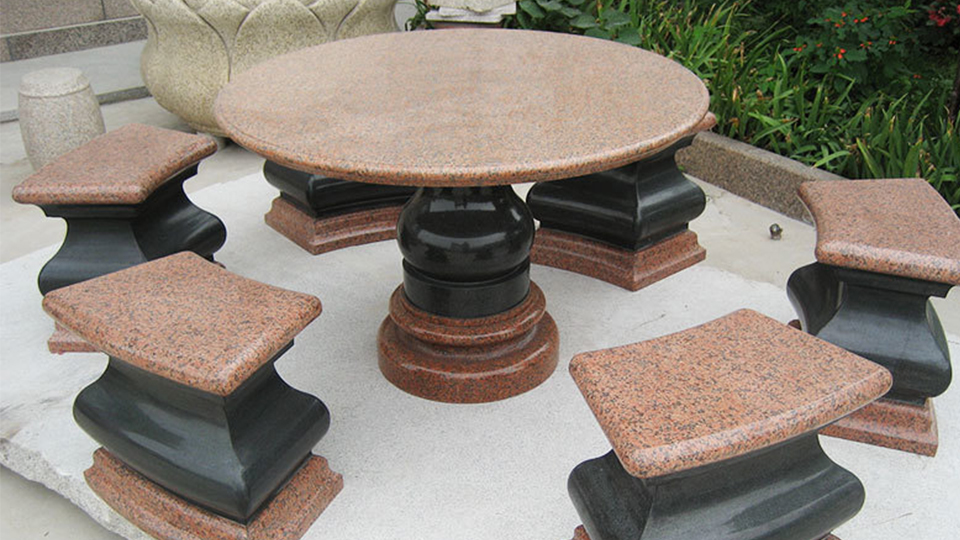

Slate tile, with its natural cleft texture, rich variations in color, and inherent durability, brings a timeless elegance and rugged charm to any space. Formed from layers of compressed sedimentary rock, its unique composition offers resistance to staining, scratching, and water damage, making it a popular choice for both residential and commercial flooring. However, despite its robust nature, slate is not impervious to dirt, grime, and the accumulation of everyday wear. Proper cleaning and maintenance are crucial to preserving its beauty, extending its lifespan, and preventing the buildup of contaminants that can dull its natural luster and even compromise its integrity over time.
This technical article delves into the art and science of cleaning slate tile floors. We will explore the unique characteristics of slate that influence cleaning methods, outline a comprehensive step-by-step guide for effective routine and deep cleaning, discuss common challenges and their solutions, and provide expert tips for long-term maintenance and preservation of your slate flooring investment.
Understanding the Unique Nature of Slate:
Before we delve into cleaning techniques, it's essential to appreciate the fundamental properties of slate that dictate appropriate cleaning methods:
Porous Nature: While generally less porous than some other natural stones like limestone or travertine, slate still possesses a degree of porosity. This means liquids and spills can penetrate the surface if not addressed promptly, potentially leading to staining. Sealers are often applied to mitigate this porosity.
Cleft Texture: The characteristic uneven, layered surface of slate, while aesthetically appealing and providing excellent traction, also presents a challenge for cleaning. Dirt and debris can become trapped in the crevices and irregularities.
Mineral Composition: Slate is composed of various minerals, including quartz, mica, and feldspar. While generally durable, certain harsh chemicals can react with these minerals, potentially causing discoloration or etching.
Sealers: Many slate floors are treated with sealers to enhance their resistance to staining and moisture penetration. The type of sealer used will influence the appropriate cleaning products and methods. It's crucial to know if your slate is sealed and, if so, what type of sealer was applied.
A Comprehensive Step-by-Step Guide to Cleaning Slate Tile Floors:
Effective cleaning of slate floors involves a multi-stage approach, encompassing both routine maintenance and periodic deep cleaning:
I. Routine Cleaning (Daily or Weekly):
The goal of routine cleaning is to remove loose dirt, dust, and debris before they become embedded in the textured surface.
Dry Removal:

Sweeping: Use a soft-bristled broom or a microfiber dry mop to sweep the floor thoroughly. Pay close attention to grout lines and the textured surfaces where dirt can accumulate. Avoid using stiff-bristled brooms that can scratch the slate surface.
Vacuuming (with caution): A vacuum cleaner with a soft brush attachment can be used, but exercise caution to avoid scratching the slate. Ensure the brush head is clean and free of any abrasive particles. Avoid using the beater bar or powerhead directly on the slate, as this can cause damage, especially to softer varieties.
Damp Mopping (as needed):
Prepare Cleaning Solution: Mix a pH-neutral, natural stone cleaner specifically designed for slate or a mild dish soap (a few drops in a gallon of warm water). Avoid using harsh chemicals, abrasive cleaners, ammonia, bleach, or acidic cleaners like vinegar or lemon juice, as these can damage the sealer and the slate itself.
Dampen the Mop: Use a clean microfiber mop. Wring it out thoroughly so it is damp, not wet. Excess water can seep into the grout lines and potentially damage the subfloor or leave streaks on the slate.
Mop the Floor: Mop in overlapping strokes, ensuring you cover the entire surface. Pay extra attention to areas with visible dirt or spills.
Rinse (optional but recommended): If you used soap, a second pass with a clean, damp mop rinsed in plain water can help remove any soap residue, which can attract dirt over time.
Dry the Floor: Allow the floor to air dry completely. You can expedite the drying process with a clean, dry microfiber cloth, especially in high-traffic areas or if you used a significant amount of water.
II. Deep Cleaning (Monthly or Quarterly):
Deep cleaning aims to remove embedded dirt, grime, and buildup that routine cleaning may not address.
Thorough Dry Removal: Begin with a meticulous sweeping or vacuuming as described in the routine cleaning section.
Prepare Deep Cleaning Solution: For a deeper clean, you can use a slightly more concentrated solution of a pH-neutral stone cleaner or a specialized slate cleaner. Follow the manufacturer's instructions carefully. You can also consider using a diluted solution of alkaline cleaner specifically formulated for natural stone, but always test it in an inconspicuous area first to ensure it doesn't damage the slate or sealer.
Apply Cleaning Solution: Apply the cleaning solution to the floor using a damp mop or sponge. Allow it to dwell on the surface for a few minutes (as per the product instructions) to help loosen embedded dirt. Avoid letting the solution dry on the floor.
Gentle Scrubbing (if necessary): For stubborn dirt or buildup, you can gently scrub the affected areas with a soft-bristled brush or a non-abrasive scrubbing pad. Pay attention to the grout lines, which tend to accumulate dirt. Avoid using harsh brushes or abrasive pads that can scratch the slate.
Rinse Thoroughly: Rinse the floor thoroughly with clean, warm water using a clean mop or sponge. Ensure all traces of the cleaning solution are removed, as residue can attract dirt and dull the finish. Change the rinse water frequently to avoid reapplying dirty water to the floor.
Extract Excess Water: Use a clean, dry mop or a wet/dry vacuum cleaner to remove as much of the rinse water as possible. Standing water can seep into the grout and potentially cause issues.
Dry Completely: Allow the floor to air dry completely. You can use fans to circulate air and speed up the drying process. Avoid walking on the floor until it is fully dry.
Addressing Common Challenges and Solutions:

Stains:
Identify the Stain: Knowing the type of stain (e.g., oil-based, water-based, organic) can help determine the best approach.
Act Quickly: Fresh spills are always easier to remove than old, set-in stains. Blot spills immediately with a clean cloth or paper towel.
Poulticing: For stubborn stains, a poultice made from a mixture of a absorbent material (like baking soda, diatomaceous earth, or cornstarch) and an appropriate cleaning solution can draw out the stain. Apply the poultice to the stained area, cover it with plastic wrap, and let it sit for several hours or even overnight. Rinse thoroughly afterward.
Professional Help: For persistent or severe stains, consult a professional stone restoration specialist.
Grout Cleaning: Grout lines, being porous, tend to trap dirt and can become discolored.
Baking Soda Paste: A paste of baking soda and water can be applied to the grout lines, scrubbed gently with a grout brush, and then rinsed thoroughly.
Oxygen Bleach: A diluted solution of oxygen bleach (sodium percarbonate) can be effective for cleaning grout. Follow the product instructions carefully and ensure good ventilation. Avoid using chlorine bleach, which can damage some sealers and discolor grout.
Grout Sealer: Applying a grout sealer after cleaning can help prevent future staining.
Dullness: Over time, slate floors can lose their natural luster due to dirt buildup, soap residue, or wear on the sealer.
Thorough Cleaning: Ensure you are following a proper cleaning routine and rinsing thoroughly to remove residue.
Sealer Reapplication: If your slate is sealed, the sealer may need to be reapplied periodically according to the manufacturer's recommendations. This will not only enhance stain resistance but can also restore some of the natural sheen.
Professional Polishing (for certain slate types): Some types of slate can be professionally polished to restore a higher level of shine. Consult a stone restoration specialist.
Scratches: While slate is relatively scratch-resistant, sharp objects can still cause damage.
Prevention: Use mats at entryways to trap dirt and grit. Place felt pads under furniture legs. Avoid dragging heavy objects across the floor.
Repair: Minor scratches can sometimes be buffed out by a professional. Deeper scratches may require more extensive restoration.
Expert Tips for Long-Term Maintenance and Preservation:
Regular Sealing: If your slate is sealed, follow the sealer manufacturer's recommendations for reapplication frequency. This is crucial for protecting the stone from stains and moisture.
Use Entryway Mats: Place mats at all entrances to trap dirt and debris before they are tracked onto the slate floor.
Clean Spills Immediately: Don't allow spills to sit on the surface for extended periods. Blot them up promptly with a clean cloth.
Avoid Abrasive Cleaners and Tools: Always use pH-neutral cleaners specifically designed for natural stone or mild dish soap. Use soft cloths, microfiber mops, and soft-bristled brushes.
Protect Furniture Legs: Use felt pads under all furniture legs to prevent scratches.
Proper Ventilation: Ensure good ventilation when cleaning to allow the floor to dry quickly.
Consider Professional Cleaning: Schedule professional deep cleaning and sealing every 1-2 years to maintain the beauty and integrity of your slate floors.
Conclusion: Preserving the Enduring Beauty of Slate:
Cleaning slate tile floors is a blend of consistent routine maintenance and periodic deep cleaning. By understanding the unique characteristics of this natural stone and adhering to the proper cleaning techniques and precautions outlined in this guide, you can effectively remove dirt, grime, and stains while preserving its natural beauty and extending its lifespan. Remember to always use pH-neutral cleaners, avoid harsh chemicals and abrasive tools, and promptly address spills. With a little care and attention, your slate floors will continue to provide a durable and elegant foundation for your space for years to come.
Name: selena
Mobile:8613176910558
Tel:86-13176910558
Whatsapp:8619323167067
Email:409284553@qq.com
Add:Laizhou ,Shandong , Shandong Province, China